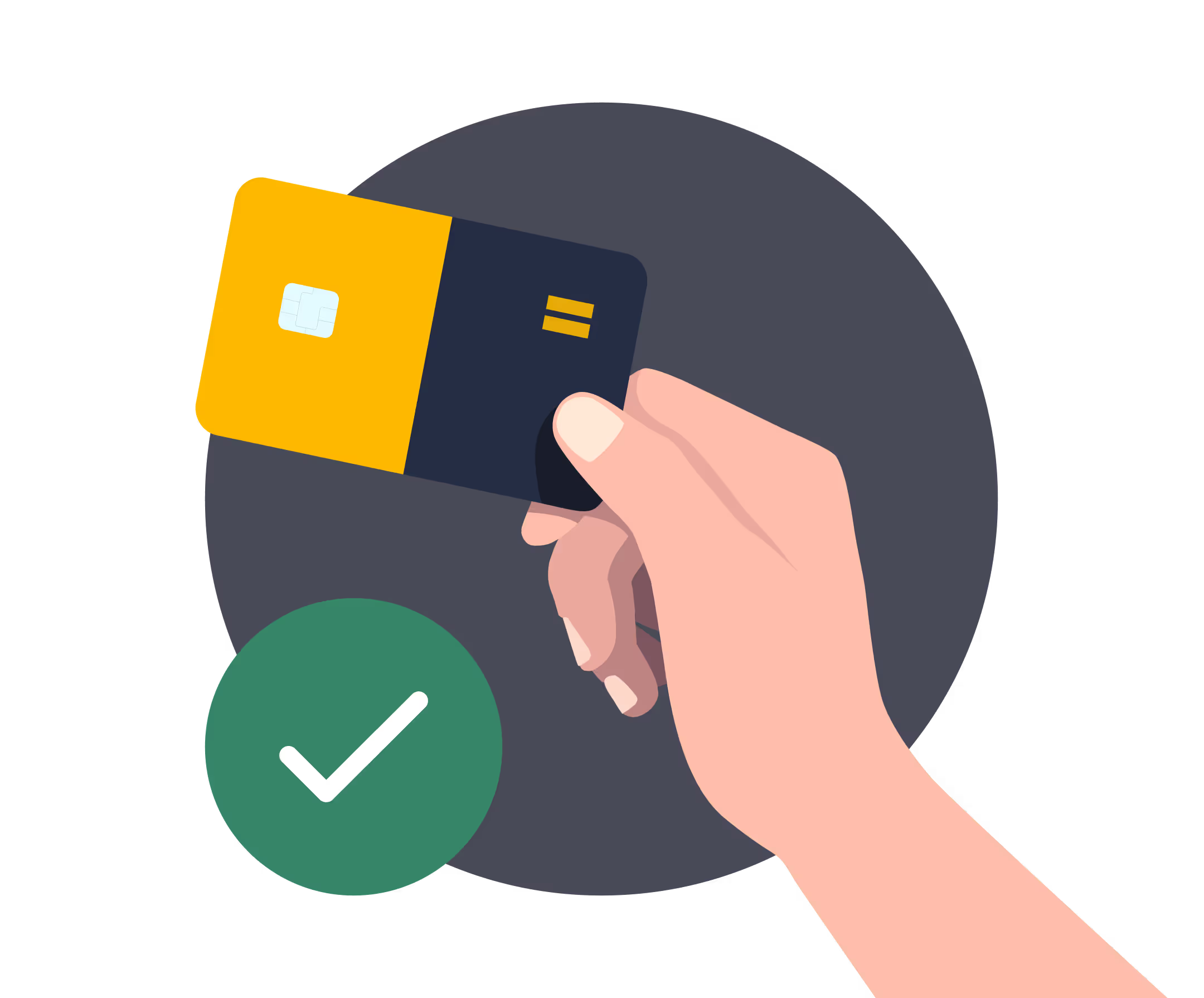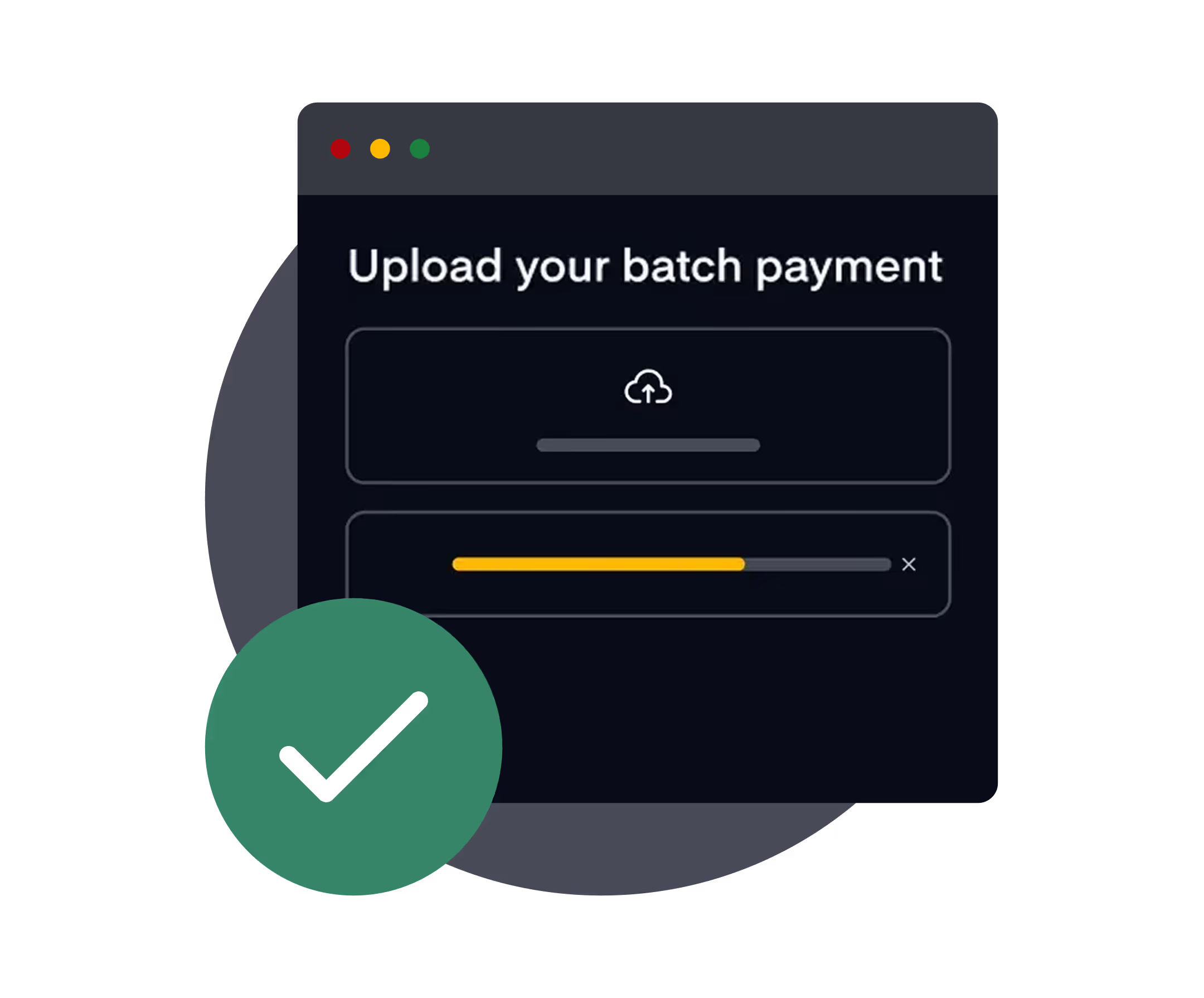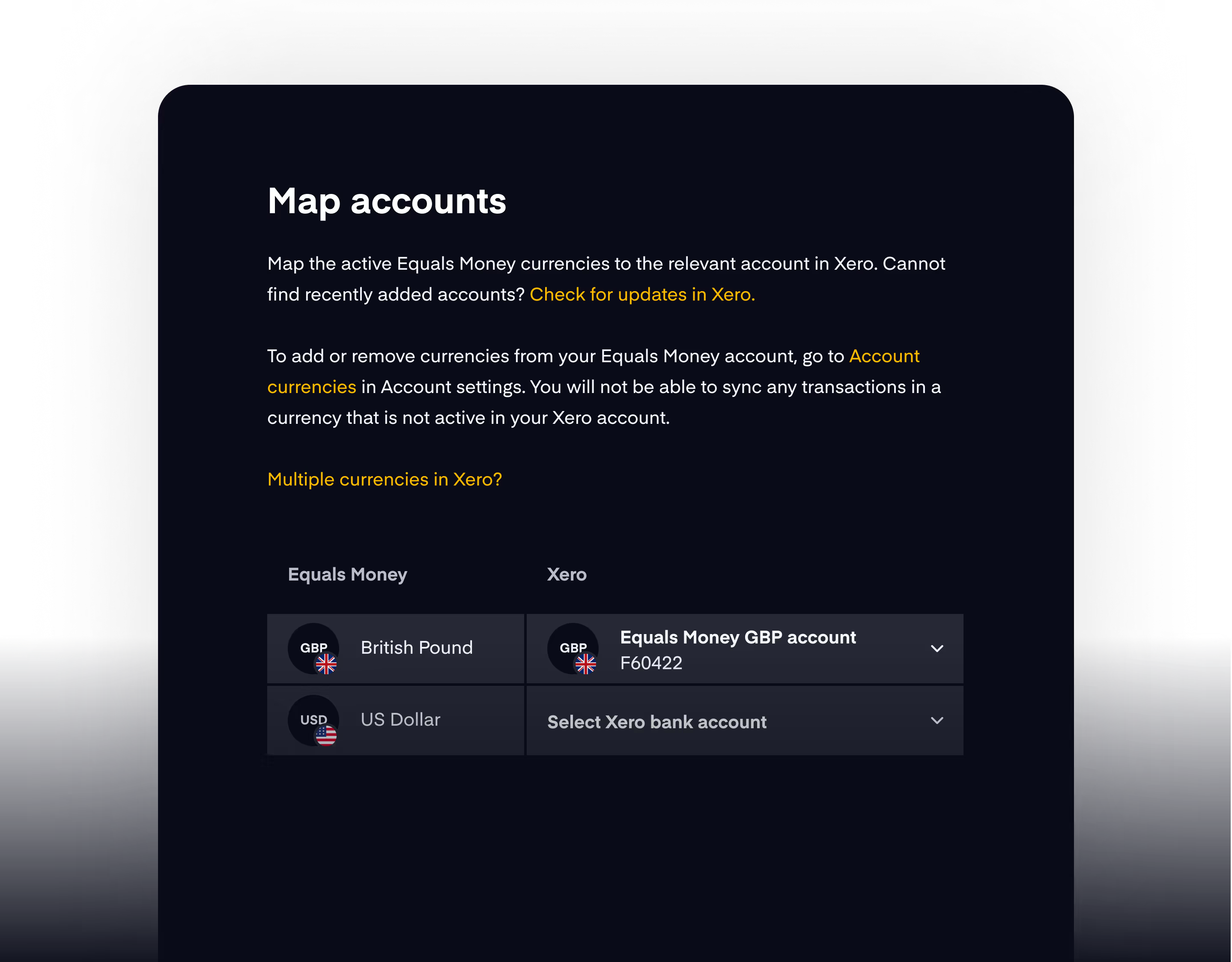HKD
The Hong Kong dollar (HKD) is one of the world’s most recognisable and widely traded currencies, playing a vital role in global finance and international foreign exchange markets.
As the official currency of Hong Kong, HKD underpins the region's status as a major financial hub and international gateway to China. With its stable peg to the US dollar, robust currency board system, and strong regulatory framework, HKD offers investors and businesses a trusted medium for trade, investment, and cross-border transactions.
Whether it’s facilitating global forex trading, supporting multinational companies, or serving millions of tourists and residents daily, the HKD remains a key pillar of Asia’s financial landscape.
Yes, you can make purchases in HKD using an Equals Money card.
Equals Money cards support 21 global currencies (including HKD), allowing you to make local currency purchases in Hong Kong. However, your card balance must include the required amount in HKD.

.png)
Yes, you can receive payments in HKD using an Equals Money account.
Equals Money accounts are equipped with a multi-currency IBAN, allowing you to receive payments and manage funds in 38 global currencies (including HKD), without the need for currency conversion.

Yes, you can make payments in HKD using an Equals Money account.
Equals Money allows outbound wire payments in 61 global currencies (including HKD). Read more on how to make an online payment here.
If you're an existing payments customer and do not have access to an online account, please speak to your account manager or get in touch with our team.

Yes, you can make bulk payments in HKD using an Equals Money account.
Equals Money allows bulk (batch) payments in 35 global currencies (including HKD).

Historical context of the Hong Kong dollar
The Hong Kong dollar has a fascinating history that mirrors the region’s transformation from a small trading port to one of the world’s leading international financial centres.
Before the introduction of HKD in the 19th century, Hong Kong’s economy operated with a mix of currencies, including Spanish silver dollars, Chinese coins, and British pound sterling. In 1863, the British colonial administration introduced the first official Hong Kong dollar coins to bring monetary order to the growing colony and facilitate trade with China and other global partners.
The impact of World War II
In 1935, the Hong Kong dollar was formally pegged to the British pound sterling, reflecting Hong Kong’s status as a British colony.
However, during WWII and subsequent Japanese occupation (1941–1945), the monetary system collapsed, and Japanese military yen temporarily replaced the HKD. After Japan’s surrender, the Hong Kong dollar was reinstated, initially at a fixed rate to the pound sterling.
Shift to a floating exchange rate
In 1972, after the global collapse of the Bretton Woods System (the post-war system of fixed exchange rates), many currencies began to adopt floating rates. In response to growing volatility and the declining international role of the pound sterling, Hong Kong shifted the HKD’s peg from sterling to the US dollar — but even then, the link was not fully stable.
By 1974, due to continued economic uncertainty, inflation, and fluctuating USD values, Hong Kong allowed the HKD to float freely on international markets. This meant that the exchange rate of the Hong Kong dollar was determined by market forces of supply and demand, without official government intervention to maintain a fixed rate.
The floating system exposed Hong Kong’s small, open economy to exchange rate volatility, which created challenges for trade and investment.
The introduction of the Linked Exchange Rate System
In 1983, following political and economic uncertainties ahead of the 1997 handover of Hong Kong from Britain to China, the Hong Kong Monetary Authority (HKMA) established the Linked Exchange Rate System (LERS), pegging the Hong Kong dollar to the US dollar at a rate of HK$7.80 to US$1. Though in practice, it’s allowed to trade within a narrow band (currently 7.75 to 7.85).
Still in place today, the HKMA stands ready to buy or sell USD to maintain the peg, ensuring the Hong Kong dollar doesn’t drift outside the official trading band, providing exchange rate stability with currency reserves to support Hong Kong’s financial services sector and attract foreign investment.
Currency symbol: HK$
The currency symbol for the Hong Kong dollar is HK$, which clearly distinguishes it from other dollar-based currencies in global use. This prefix “HK” is essential to avoid confusion with the US dollar ($) and other dollars like CAD (Canadian dollar), AUD (Australian dollar), or SGD (Singapore dollar).
In practice, prices in Hong Kong are always written with “HK$”, whether on restaurant menus, shopping receipts, business invoices, or online retail sites. On financial platforms and forex markets, the HK$ symbol is an important marker for traders monitoring exchange rates, money transfers, and international money transfers involving HKD.
ISO currency code: HKD
The internationally recognised ISO currency code for the Hong Kong dollar is HKD.
This three-letter code is used globally in banking, forex trading, currency rankings, electronic payments, and financial reporting.
For example, when exchanging money at banks or making cross-border payments, “HKD” is the standard way to specify Hong Kong currency. On forex trading platforms and exchange desks, the HKD is paired with other major currencies using this code, helping investors track live exchange rates and execute trades efficiently. The ISO code also appears in travel money services, currency converters, financial statements, and business contracts where precise identification of the Hong Kong dollar is essential.
Central bank: the Hong Kong Monetary Authority
Established in 1993, the Hong Kong Monetary Authority (HKMA) serves as Hong Kong’s central bank and plays a pivotal role in maintaining the stability and integrity of HKD.
To ensure the credibility of the Hong Kong dollar, the HKMA requires that all issued HKD banknotes are fully backed by US dollar reserves. This currency board system means that for every Hong Kong dollar in circulation, there is an equivalent amount of US dollars held in reserve, reinforcing trust in the peg.
Unlike central banks in other economies, the HKMA does not set interest rates based on domestic economic conditions. Instead, Hong Kong’s interest rates closely track US interest rates because of the fixed currency peg to the USD
The HKMA also manages Hong Kong’s foreign exchange reserves and oversees the stability of its banking system, safeguarding the value of the HKD and supporting Hong Kong’s role as a leading international finance centre.
Unlike most central banks, the HKMA does not directly issue all Hong Kong banknotes. Instead, three commercial, note-issuing banks are authorised to print and circulate HKD banknotes under strict guidelines.
Note-issuing banks include:
- Hongkong and Shanghai Banking Corporation (HSBC) Limited
- Bank of China (Hong Kong) Limited
- Standard Chartered Bank (Hong Kong) Limited
Denominations: coins and banknotes
The Hong Kong dollar is issued in a variety of denominations, offering practicality and flexibility for daily transactions, retail spending, and larger commercial activities.
Bank notes are available in HK$10, HK$20, HK$50, HK$100, HK$500, and HK$1,000 denominations, each featuring distinct colours and designs that reflect Hong Kong’s cultural heritage and iconic landmarks. The HK$10 note is unique because it is also issued by the government itself since 2002 in response to continuing public demand.
The three note-issuing banks also issue commemorative banknotes in denominations of HK$150, HK$100 and HK$20. Although commemorative banknotes are not commonly used in daily transactions, they remain legal tender.
HKD coins denominations include 10 cents, 20 cents, 50 cents, HK$1, HK$2, HK$5, and HK$10.
Currency subunit
HKD is divided into 100 cents, which serve as its official subunit.
Although the lowest denominations like 1-cent and 5-cent coins have largely disappeared from everyday circulation due to low value and high minting costs, prices in Hong Kong are still commonly displayed with two decimal places.
Common HKD trading pairs in FX
The Hong Kong dollar is an actively traded currency on the global forex market, supported by Hong Kong’s status as a major international finance and trade centre. Due to its stable peg to the US dollar, the USD/HKD (US dollar/ Hong Kong dollar) currency pair is one of the most significant forex pairs involving the Hong Kong currency. Traders often monitor this pair to hedge against currency fluctuations, engage in FX risk management, speculate on changes in monetary policy, or arbitrage price differences when trading between Asian and Western markets.
Other popular HKD forex pairs include HKD/CNH (Hong Kong dollar/ offshore Chinese yuan) and HKD/JPY (Hong Kong dollar/ Japanese yen). These pairs are particularly relevant for investors interested in the relationship between Hong Kong’s economy, Mainland China, and other major Asian economies. With its stable exchange rate and role as a gateway to China’s financial markets, the Hong Kong dollar continues to be an important currency for forex traders, institutional investors, and multinational businesses operating across Asia-Pacific.
















